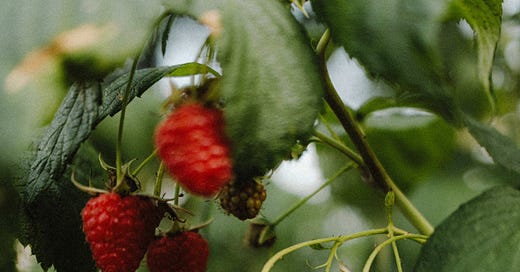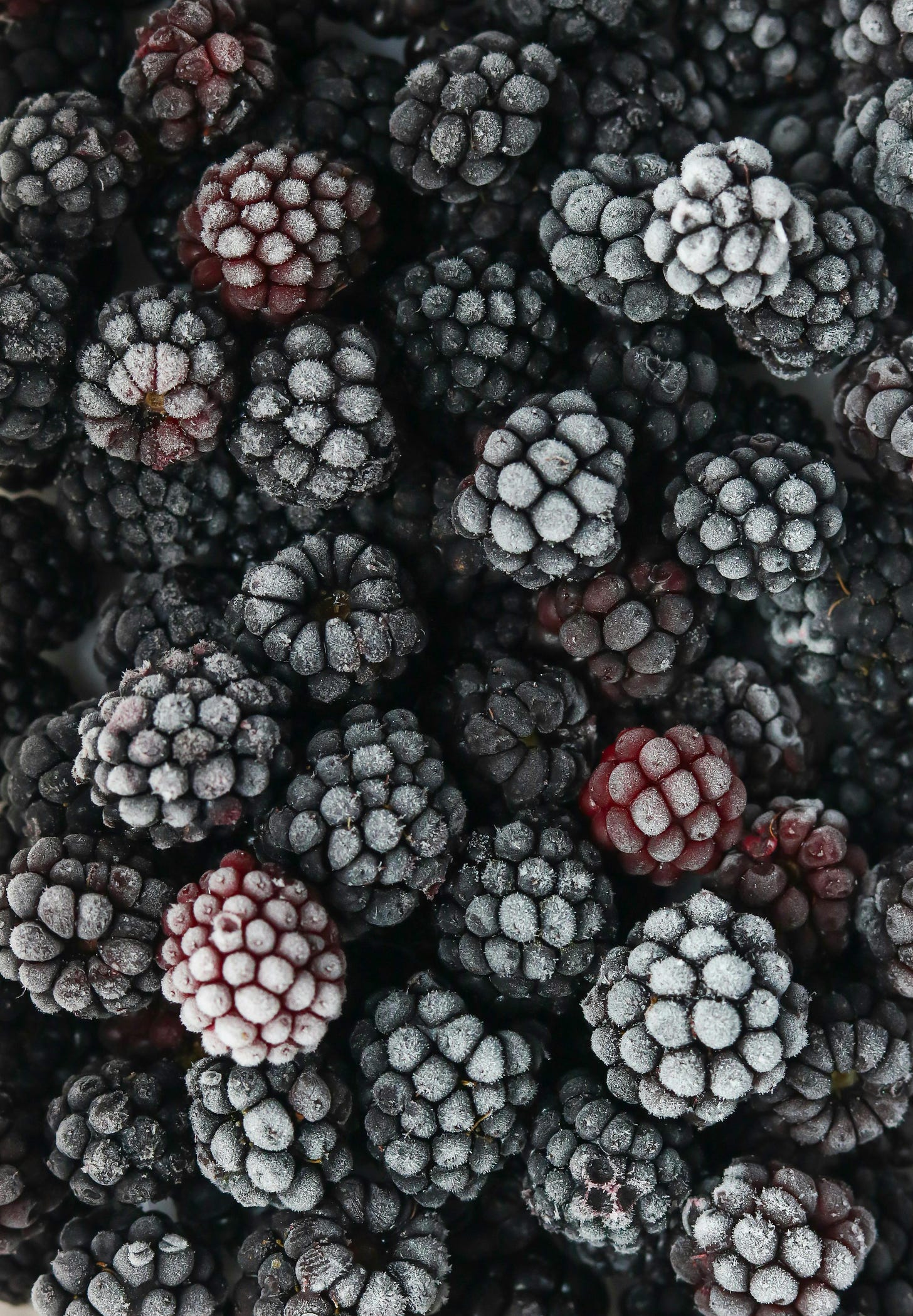Food, like many things, helps bring people together. Once you connect with a community of people, the connection and common interest begin to grow. I am very pleased to welcome
as this week’s guest author. And if you are like me, who often has a glut of soft fruits. Sarah’s freezing tip will help.The best way to freeze the last of the Summer fruit
by
So we’re looking at the best way to freeze Summer fruits today. I say fruits, but mostly berries, really.
I used to have a big collection of fruit bushes and trees in my garden.
Raspberries, all kinds of currants, gooseberries, blueberries, strawberries, cherries and figs. Gooseberries weren’t the most common fruit shrub in Belgium but we had several. Great for bulking out other fruits, same for the currants. Unless you like currant jelly, of course, but easy to add to lots of things.
Growing up that also included plums, pears, apples and hazelnuts. Those would be juiced, canned or stored.
Kilos and kilos of frozen, preserved and dehydrated fruit were stored every year.
Not at the moment, which is also why this post sat in my drafts folder until almost the end of the fruit harvesting season. Maybe more on that later.
Raspberries, elderberries, blackberries and other fruits do still need to be preserved this late-ish in the season. Grapes, apples and pears are all still on their way too1.
Most of the harvest would be frozen first because that’s easiest when it’s hot.
Belgian Summers these days can be boiling. I remember maybe even 10 years ago they would say it was just physically impossible for Belgium to ever be hotter than 38-39-ish degrees Celsius. Literally physically impossible.
I remember the anticipation of what Summer would be like, would it be warm and comfortable or would it be a ‘kwakkelzomer’, literally a wobbly Summer with days of off-and-on-again mildly sunny days, days with lots of rain and maybe a week of 30 degree weather.
That would be the topic of conversation, would we get the Summer we deserved? These days, Summers are always warm and often grey too. The hottest temperature recorded is now 41,8°C.
Freezing fruit is a bit of an art either way. The main thing being you don’t want it to freeze into one solid chunk of fruit. You want to keep all the individual berries separate. That way, you can use them later in all sorts of things rather than having to hack away at a lump of solidly frozen berry mass. That’s just dangerous.
The trick for freezing them properly is one I borrowed from flash-freezing cakes.
You see, cakes in bakeries are often frozen whole and later defrosted with some decorative finishing touches added. While you need a flash freezer and some additives to the whipped cream to pull that off well, it does transfer to freezing fruit on its own in a regular deep-freezer.
The fruit will still have a bit of a frozen texture, mushy after defrosting, but they’ll all be individual bits.
All you need is a baking sheet that’s freezer-proof, and fits your freezer, and some baking parchment.
Rinse the berries and leave to dry on kitchen towel. Once dry, spread the berries on the baking sheet lined with the baking parchment and put in the freezer. If you’re freezing fruit with stones, remove those first.
Once the berries are frozen solid, simply pull up the baking parchment and use it to pour the berries into a zip-lock bag.
The bags will store flat on top of each other and can be filled to the brim when all the air is pushed out. Keep for up to a year.2
Obviously, label appropriately with the type of fruit when it was frozen…
That’s it. All you need to do next is simply defrost a couple berries to add to some breakfast, make a sauce, a smoothie, some jam… I feel like maybe milkshakes should make a comeback, we have not heard from them in ages.
This post is the first in Sarah’s mini series on food preservation. She’s currently working her way to the first instalment of her seasonal recipe bundles coming in late September-early October and doing a little ‘warm up’ tour. Next, she’s back on her own Substack with ‘Wait is that Belgian?’, a series where she examines if certain foods are, in fact, Belgian! Coming up, waffles! And stick around there because in this series on food preserving she’ll, hopefully, look at canning. Then we’ll be almost ready for the Fall recipe collection. If that’s something you’re interested in, do head over to her publication and join in.
Sarah is a Belgian pastry chef who lives in the UK where she writes about seasonal recipes and traditions and shares her tips and tricks for creating patisserie level bakes at home.
Assuming you’re in the Northern Hemisphere in a relatively mild climate. Anyone in the Southern Hemisphere has all this still to look forward to, yay!
The National Center For Home Food Preservation in the US suggests fruit can be kept frozen for 8-12 months, and note the dates listed are more about the quality of the fruit than whether it’s still fit for consumption. https://nchfp.uga.edu/papers/UGA_Publications/uga_freeze_fruit.pdf
From the FSL team. Thank you
, for sharing this tip with us.







Brilliant. I discovered last year that it's easier to use frozen berries in muffins and cupcakes because they don't smash when you mix them into the batter so now I almost always freeze berries before using them. And they do clump together if you're not careful. Another little trick is to chop frozen berries into small pieces and fold those into muffin or cupcake batter - this distributes their flavor throughout the batter and keeps the fruit from interfering with the texture of the baked good. Thanks for a great post!
Although I have lots of raspberry bushes, I don't usually freeze them the berries becasue they defrost a bit too mushy for me. But I do freeze my Gooseberries and Rhubarb.